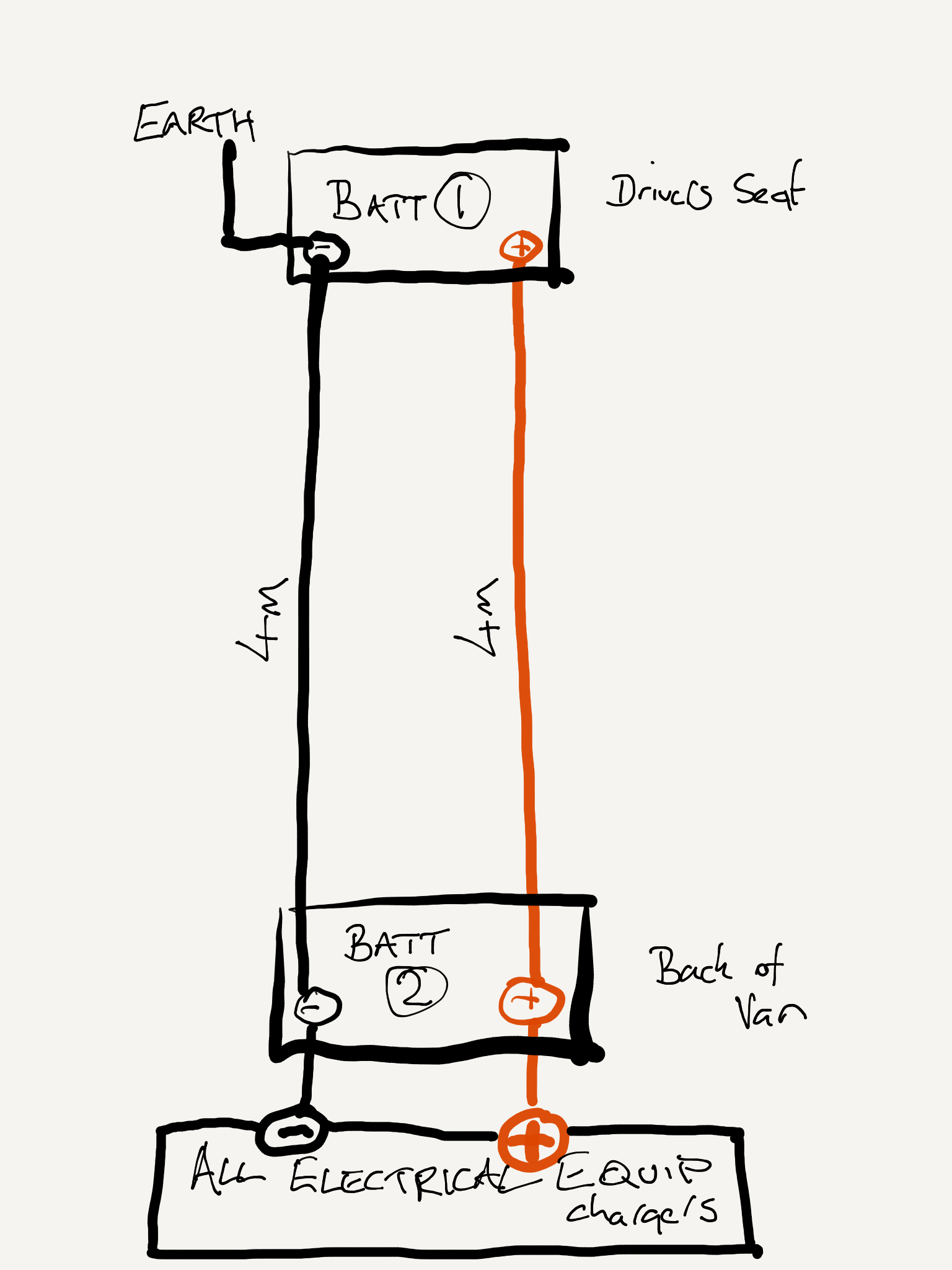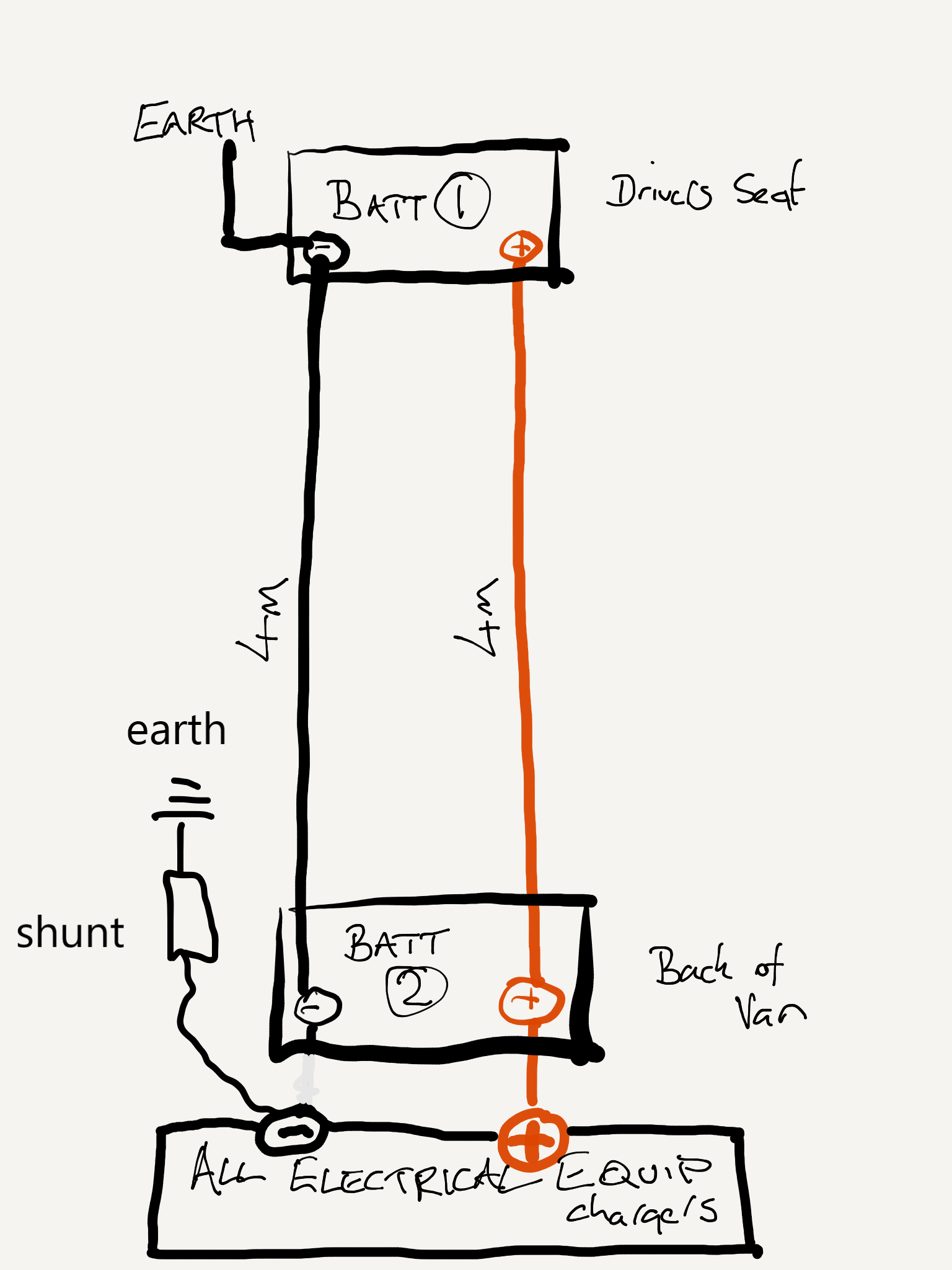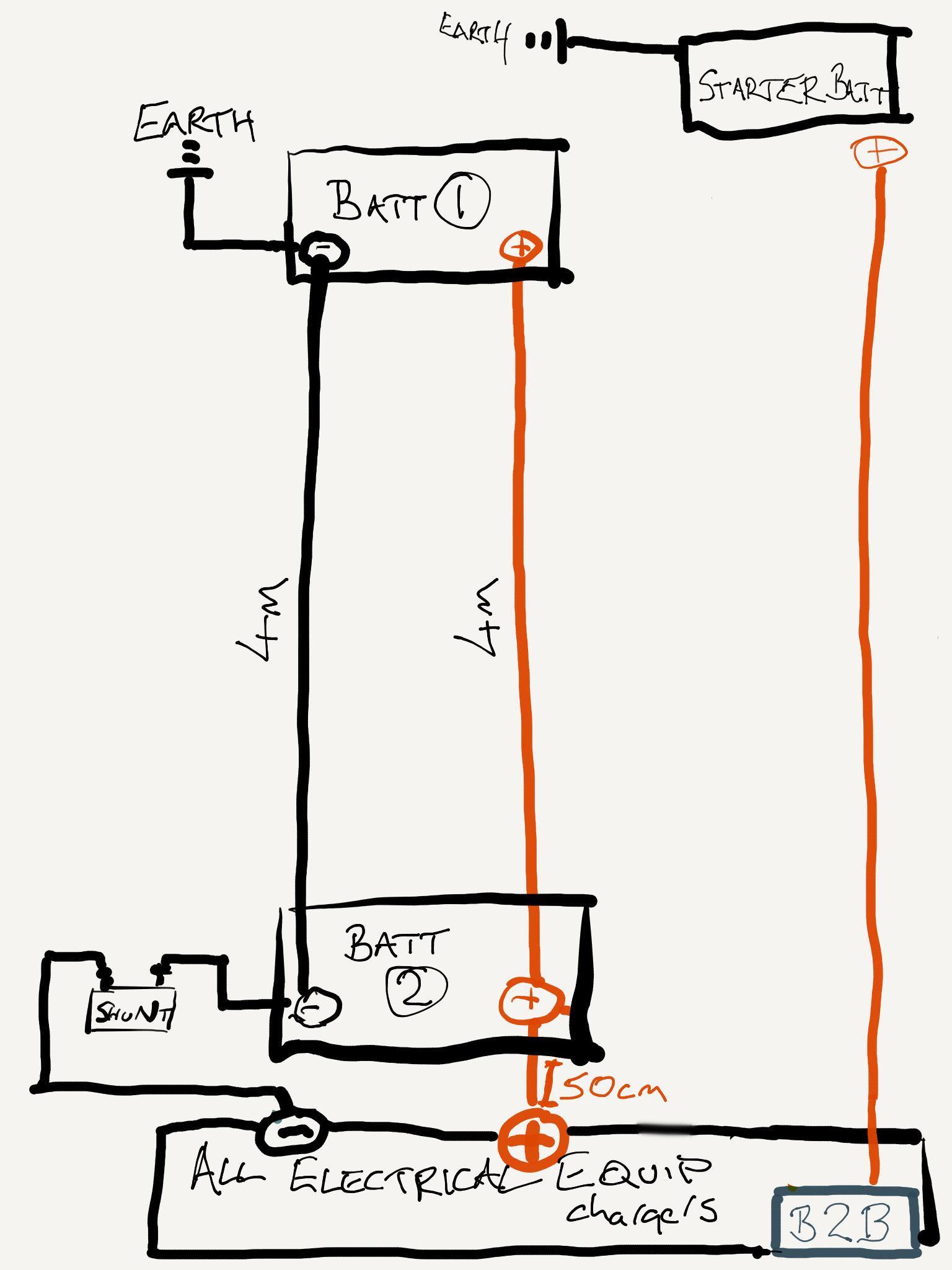I'm trying to figure out where to locate the shunt in my setup which has a battery under the drivers seat (1) and another in the cupboard at the back of the van (2) where all the electrics are located. The battery under the drivers seat is earthed so that the load is balanced across the bank.
My question is do I need to locate the shunt near battery (1) as that is where the earth is, and run another 4m cable back from the shunt to where all the electrical equip is located at the back of the van? This would mean that the +ve supply cable would be say 50cm and the -ve over 4m. This to my mind would unbalance the load, but I'm not sure? Whats the best setup in this situation? Thanks!





